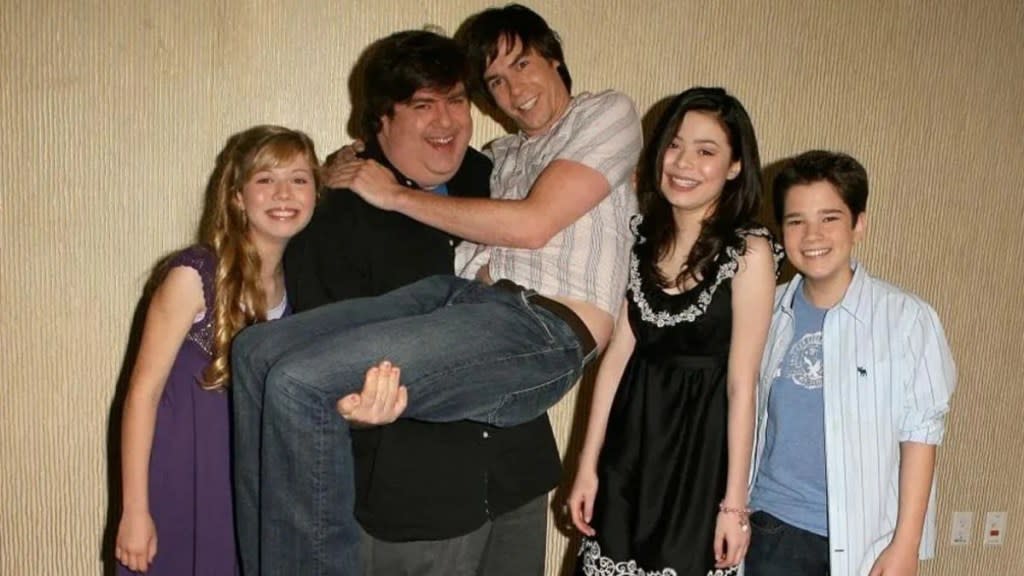‘Quiet on Set’ Directors Discuss Crafting the Explosive Nickelodeon Documentary That Captivated Audiences: ‘The Timing Was Right’

The Investigation Discovery docuseries “Quiet On Set: The Dark Side of Kids TV” digs into the abusive culture that thrived at Nickelodeon under the leadership of Dan Schneider, who produced some of the most influential shows of the late ’90s and early aughts, including “All That,” “The Amanda Show,” “Zoey 101,” “Victorious,” “Drake & Josh” and “iCarly.” In the five-part series, alumni of popular Nickelodeon series talk about their experience working on Schneider’s sets, and actor Drake Bell divulges that he was sexually abused by a dialogue coach employed by the network. The explosive revelations have prompted responses from several other former Nickelodeon stars and Schneider, who issued a mix of apologies, deflects and denials before suing Warner Bros. Discovery and the series’ producers.
Where did the idea to do Quiet On Set come from?
MARY ROBERTSON: We’d noticed some of the videos on social media that compiled footage from some of the shows of sets that Dan Schneider presided over. Some of them were montages of clips that are arguably sexual in nature. You see Ariana Grande leaning off the side of the bed pouring water on herself in a manner that is arguably evocative of pornography. Jamie Lynn Spears received a squirt of a viscous liquid on her face. At the time that they were appearing in these videos, these now women were young teenagers. There was earned speculation and skepticism online and curiosity, befuddlement, anger. We also, around this time, read an article by Kate Taylor in Business Insider that advanced the reporting. We reached out to Business Insider and [journalist] Kate Taylor and we’re so grateful that they agreed to partner with us.
EMMA SCHWARTZ: This is also around the time that Jennette McCurdy’s memoir [“I’m Glad My Mom Died”] had come out, and there was starting to be more of a conversation around this world. So we immediately dug in and tried to
reach out to, really, hundreds of people. “Okay, what was your experience? What was going on?” Very quickly, we started hearing from people who, even if they weren’t in a place where they were ready to talk, said, “I’m glad somebody is digging in, because there’s a lot here to unearth.”
What was the biggest challenge?
ROBERTSON: Bringing individuals to the point where they felt comfortable and understood that we would put them in the best possible position. Emma did really incredible work in that regard. And we’re so happy that the vast majority of folks that participated in this project have let us know that they feel positively impacted by the experience.
I think others have tried to take on this subject matter before; perhaps the timing wasn’t right for them. Perhaps some of the instincts were different. The brave contributors who ultimately shared their stories wanted to understand
that their stories would be taken care of, they would be handled with sensitivity, and that, to some extent, the timing was right so that the world was ready to listen and was ready to embrace them with generosity. It’s never easy to talk on camera, full stop.
This was the first time Drake Bell shared his experience of being sexually abused. How did you all reach out to him?
SCHWARTZ: I’ve spent a number of years working with people and trying to tell stories. You have to be really thoughtful and careful about how you reach out to people, especially when you know they’ve been through traumatic experiences. In the course of talking to folks, we learned there were two men who had been arrested on child sex abuse charges who had worked on the same set within just a few months of each other. That was a striking fact. [We] didn’t know if [Drake] was in a place where he would ever want to share that. So we spent a lot of time writing a letter, opening that door, and it began a back-and-forth conversation where eventually he got to the point where he was ready to share.
What’s been your response to viewers’ reactions to the documentary?
ROBERTSON: We hoped that we would be able to engage those people who were already curious about what was happening on these sets. Emma and I strive to create work at [our company] Maxine Productions that is revelatory and investigative in nature. We felt that there were burning questions around the Nickelodeon universe around what was really happening behind the scenes on the sets that Dan Schneider presided over. We felt that answering those questions was a meaningful pursuit. You’re asking questions that pertain to the creation of material that is absorbed by hundreds of thousands, if not millions, of impressionable minds. What we’re absorbing as children in particular is influencing our sense of what normal is. That’s something that we carry with us for the rest of our lives. We’re also talking about looking closely at working conditions for children.
So we knew that there was existing interest in the subject matter, given the amount of curiosity and material that already existed on social platforms. We have been overwhelmed and deeply moved by the response, which has exceeded our every expectation. Thank you to everyone who is watching. Thank you to everyone who’s bringing so much heart to the response to this project.
This story first appeared in the Race Begins issue of TheWrap’s awards magazine.
Read more from the Race Begins issue here.
The post ‘Quiet on Set’ Directors Discuss Crafting the Explosive Nickelodeon Documentary That Captivated Audiences: ‘The Timing Was Right’ appeared first on TheWrap.

